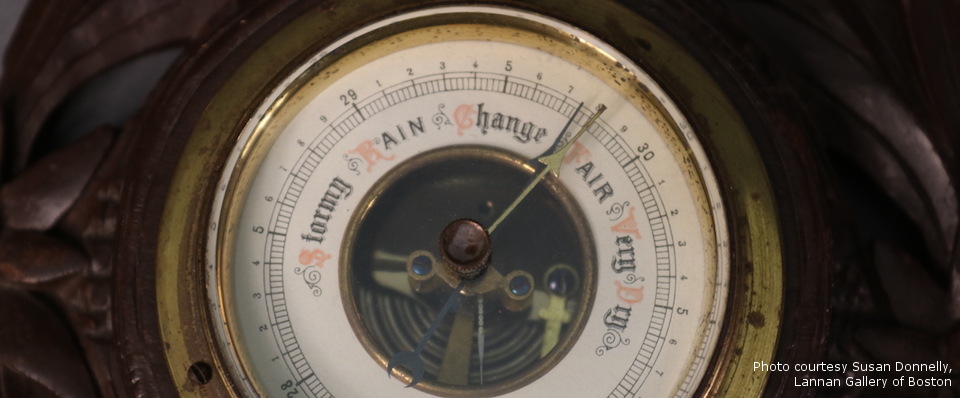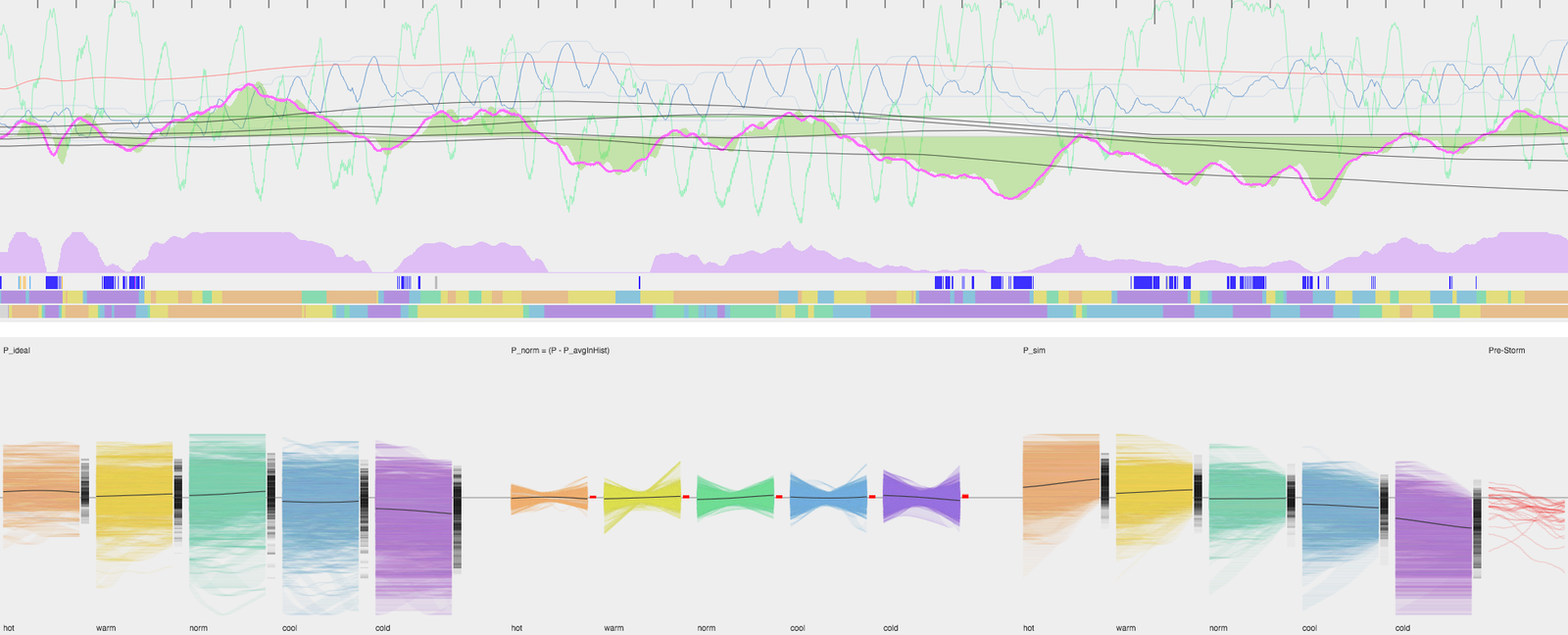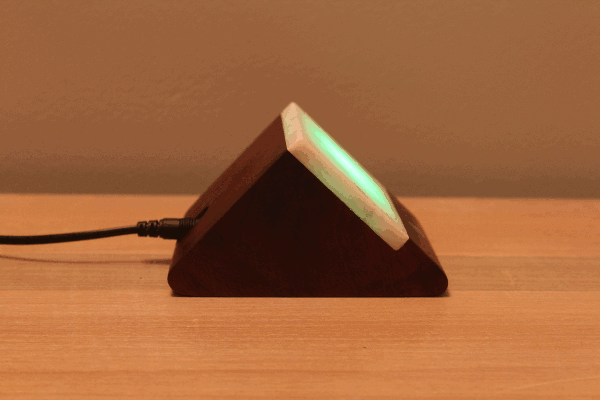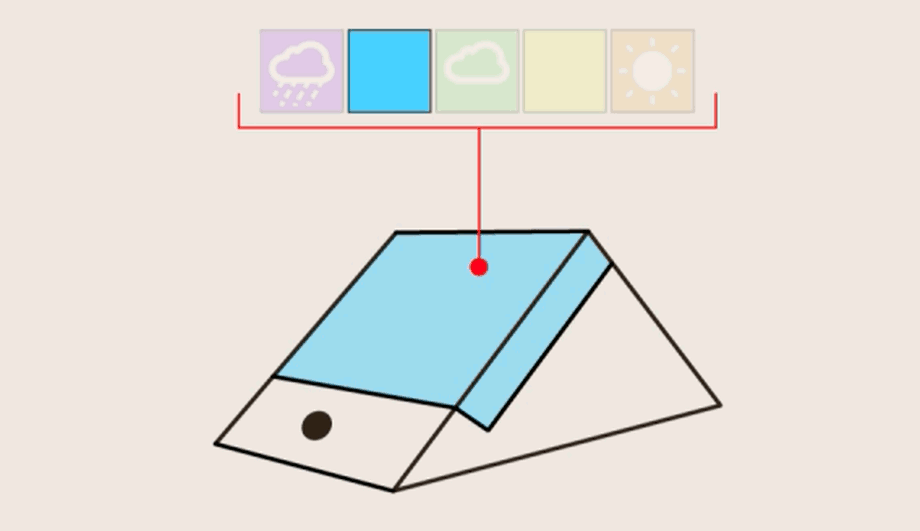The barometer is back,
and it's built on Big Data.
Studies suggest that you can be more productive (and happier) by keeping an eye on upcoming weather. If rain is forecast, focus on getting things done. When sun is on the way, get outside for 30 minutes or more. We created a device that tells you exactly that.
Say hello to LightNudge, a future-proof device that forecasts upcoming weather, learns over time, and informs your day with color.
Remind me, what's a barometer?

You've probably seen a barometer lying around an antique store or your grandparents' house. These old-world gadgets were pretty sophisticated for their time as a way to forecast the weather, with fancy dials and brass fixtures. Today, the use of household barometers has declined as vast networks of sensors have taken their place, giving rise to more detailed forecasts that can be accessed from anywhere.
But the crazy thing is, most of the old barometers you see still work. And while the modern meteorologist knows a lot more than a simple barometer can tell us, there's something deeply fascinating about being able to see tiny fluctuations in atmospheric pressure exactly where we are.
So pressure = weather, then?
Using a barometer to forecast the weather is a bit more complicated than just reading off the pressure. In general, higher pressure correlates with nicer weather (warmer, drier, clearer skies) and lower pressure correlates with harsher weather (cooler, wetter, cloudier skies), but it's all relative: not only does the pressure matter; so does the change in pressure over time.
Most old barometers have a little hand that you can adjust to keep track of where the pressure was the last time you checked, but it's up to you to keep a careful eye on it and assess just how much the pressure is moving around. Making sense of the dials is as much art as it is science.
Enter Big Data
We realized that there must be a way to leverage modern precision sensors, constant monitoring, and prediction models to create a new kind of barometer, one based on years of detailed weather information from a wide range of climates and locations around the world.

So we created a simulator to crunch the numbers and make sense of larger patterns. This Big Data approach means that we can tune the weather forecasting algorithm to be as targeted as possible, essentially teleporting to different times and places using previous records of barometric pressure to train and test our new barometer.
And unlike a single physical dial to help you track previous pressure values, we can make our model even more precise by keeping tabs on hundreds of readings over hours, days, weeks, and months, then leveraging those patterns in the prediction model going forward.
Never stop learning
We've seen a mounting preoccupation with Artificial Intelligence and Machine Learning in movies, books, and TV shows over the past few decades, but it's not always that complex. Sure, teaching a computer to converse might take a Herculean effort. But when the domain is narrower, the learning process can be more focused and efficient.
There are lots of different methods used in A.I., but the general idea is to let a computer change its own behavior over time (usually with a set of probabilities, weights, and flexible topologies). And that's exactly what we wanted our barometer to do: continuously make observations about the pressure, and then evolve to better reflect weather conditions exactly where it is.
So our barometer adjusts as it receives input, but it also changes the rate at which it adjusts. The device starts out only moderately confident in its predictions, adapting more quickly at first. Then over days and weeks, it begins to weigh the collective local input more heavily and forecast coming weather based on that. New input still matters; it just expands the current data set. The barometer grows exponentially wiser with age but never stops learning.
Intentional future-proofing
One of the best things about many older technologies (barometers, clocks, sewing machines...) is that they still work, even decades later. While we can chalk it up to skillful assembly and good design choices, that they continue to function is also thanks to the indelible materials used in making them.
Today, most technologies have a comparatively short lifespan. New cell phones are expected to last just a handful of years before being replaced with a newer model. Computers, tablets, TVs, and even some basic appliances get turned over within a decade because of evolving standards, incompatibilities, or broken parts. And the same goes for many devices built from materials that crack, fade, or fail due to UV light, moisture, or mechanical stresses over time.
We decided to make our barometer as future-proof as possible. In product design, there's a strong pull to add technologies that depend on other devices (WiFi, Bluetooth, Cellular, USB, etc.), but their fate 10 to 20 years from now is unknown. Instead, we chose to make the barometer stand alone, with all sensing, computation, and output capabilities contained in the unit itself and without any moving parts that could degrade with use.
We also chose to use primary materials shown to stand the test of time: wood, stone, and metal. Milled blocks of hardwood aren't nearly as production-friendly or economical as injection-molded plastics, but the implications for a product's longevity (and resulting aesthetic!) are worth it to us.
Putting it all together
Our humble attempt to rethink the barometer has yielded a modest device we call LightNudge. It uses high-tech sensing and computation to - quite literally - pull weather predictions out of thin air.

LightNudge communicates its prediction in a similarly unobtrusive and subtle way via colored light, making it clear even from across a room what the barometric forecast is.

As one might expect, we've used cooler colors to indicate wetter, cloudier weather; warmer colors suggest drier, clear weather. Green means that the pressure is holding steady, so current conditions are likely to persist.
And for those inclined to make their own predictions, you can double tap on the front of the device to replay the previous 24 hours in animated color.
The live demo at the top of this page gives you a sense of how LightNudge would behave once calibrated to your current location for a week or so.
How can I get one?
LightNudge was created by Makefast Workshop in Delaware, Ohio. For more information and availability check out the Amazon product page.